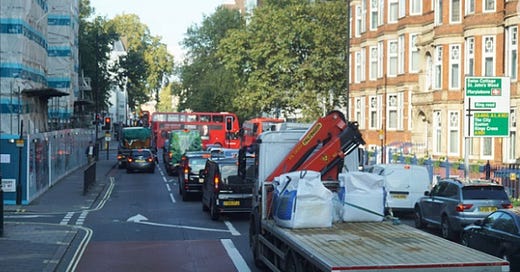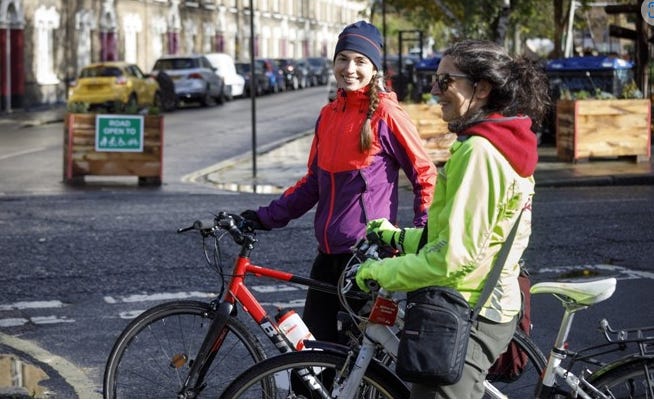In a piece I wrote on here a few weeks ago, I argued for a new culture of transportation to help overcome the policy disconnect over traffic management and environmental concerns. The latest policy shifts by the UK government ‘to end the war on motorists’ seems to move that possibility further away than ever.
Whilst central and regional government’s in the UK have policy objectives to create better towns and cities as high priority, the latest statements by the UK Prime Minister fly in the face of such claims. Whatever his objectives, his intentions to remove many of the ‘hare-brained schemes’ to manage traffic and improve mobility have nothing to do with improving the quality of places.
There is evidence to suggest exactly the opposite.
On LTNs for example, Sustrans claim a list of benefits which include:
· Increase in physical activity through more walking and cycling;
· Benefits to local businesses from increased sales and high spend by people who walk or cycle to the high street;
· Creation of new public space;
· Improved air quality;
· Lower car-use for shorter trips; and
· Increased social interaction between neighbors.
A survey of residents of LTNs in London found that 63% either agree or strongly agree that it had improved their lives as Londoners, compared with 14% who said it hadn’t.
Studies of the impact of bus lanes claim a similar list of benefits including:
· Increased bus reliability and passenger journey times (although perhaps by only a small amounts;
· Reduction in air pollution;
· Reduction of delays due to traffic congestion;
· Encourages use of public transport;
· Safer for cyclists;
· Facilitates better travel for vulnerable people and those without personal transport; and
· Increased physical activity.
A further list of benefits comes from studies of the impact of speed limits which include:
· Reduction of traffic fatalities
· Reduced noise levels
· Increased overall health of residents
Speed limits reductions are also claimed to have only a minimal effect on travel times.
The introduction of these measures has provoked resentment from some in the motoring community. The main issues seem to be that the measures decrease the total available road space which can increase wait time for car drivers due to increased congestion and thereby increasing overall emissions and limiting any environmental gains. They complain too that the construction phase for the introduction of these measures is itself disruptive.
These kinds of complaints have also caused opposition to the implementation of planning strategies such as the 15-minute city that I have written about before. Here the main argument seems to be about the limitations placed on the freedom to drive on routes of choice and restrictions on parking, as attempts are made to improve walkability and provide more scope for active travel.
Impact on place
Most of the impacts claimed for the kinds of traffic management measures listed above relate to factors which are generally thought to be associated with quality places, that is places which are safe, which provide an attractive environment, inclusive access, and better opportunities for social interaction in increased public space and imaginative street design, all of which bring health benefits to and strengthen communities.
I guess the key question about the acceptability of such schemes is about who benefits. It seems that collective community benefits to communities are pitted against car users who are often passing through rather than resident in the areas where schemes ae located. Travel convenience for motorists is set against speeded up travel times for users of public transport and active travel and better accessibility to community facilities for non-car users (and for car-users too come to that) freed from the hazards of traffic-filled streets.
Labelling the introduction of these measures as ‘a war on motorists’ is not helpful for the promotion of community and the delivery of quality places which even those who use such language also claim to prioritize. After all streets are public spaces and the places where community life is played out. Streets are for everyone.





